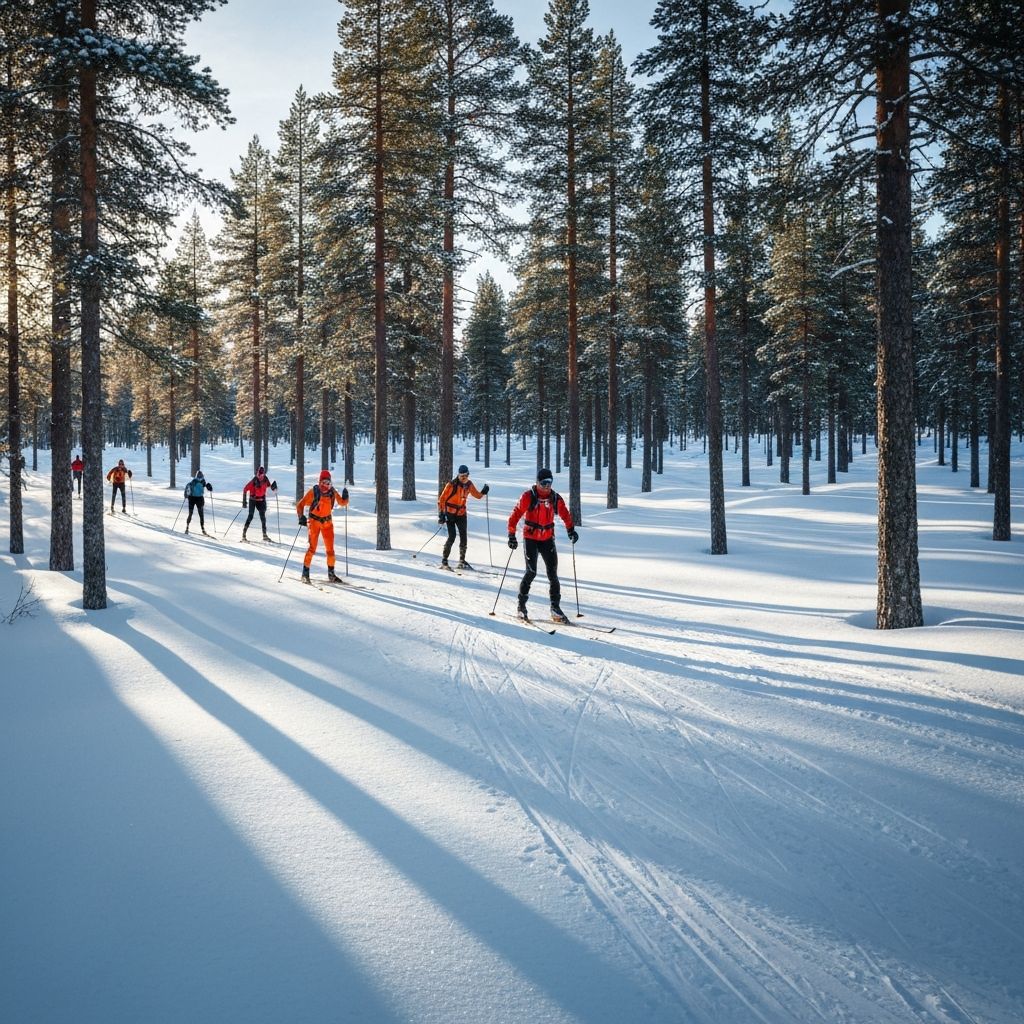For Norwegians, an activity such as cross-country skiing is one way relationships are strengthened. In addition to strengthening your muscles! We do a physical activity together, and that usually includes some element of suffering or hard work, and then after that we can begin to build trust together. Therefore, look out for invitations to ski from your new Norwegian friends. This might be your best (only?) chance to get to know them better.
It's important to let those of you who have never cross-country skied know that it can be very difficult. You'll likely fall many times your first time as you try to keep your balance about as well as Bambi on ice. However, if you get back up and keep trying you'll earn respect from your Norwegian friends. Even if you're a proficient alpine skier or snowboarder, don't get discouraged if it takes some time to learn how to cross-country well.
For Norwegians cross-country skiing is somewhat of national identity. As the old saying goes Norwegians are "born with skis on their feet". For confirmation one simply needs to look at the medal counts at the Winter Olympics to see how important the sport is to Norway. There's much excitement during the Olympics as it's one of the few times when the Norwegians can consistently beat the Swedes at something. It's recommended you cheer along with them during these times.
Utilitarian Beginnings
Cross-country skiing in Norway has its origins as a practical means of transportation. For centuries, Norwegians relied on skis as a primary mode of winter travel in a country with long, harsh winters and challenging terrain. Early skis were functional, simple wooden planks designed to allow people to move across snowy landscapes efficiently.
18th Century: The Emergence of Sport
By the 18th century, skiing began to take on recreational and sporting elements. As a form of exercise, skiing became a popular pastime for both the nobility and the common people. Norwegians held the first recorded ski race in 1842 in Tromsø, marking the beginning of competitive cross-country skiing.
19th Century: Military Use and Evolution
During the 19th century, cross-country skiing gained military significance as well. The Norwegian military recognized its value for moving troops in snowy conditions, leading to the development of specific military skiing units. The ski's design and technology also evolved during this period, with the introduction of bindings and ski poles.
20th Century: Olympic Success
The 20th century marked a significant period of growth for cross-country skiing in Norway. The sport's popularity skyrocketed, and it became a national obsession. Norway achieved remarkable success in international skiing competitions, with numerous Norwegian athletes earning medals in the Winter Olympics.
Ski Legends: Sondre Norheim and Birger Ruud
Sondre Norheim, often considered the "father of modern skiing," revolutionized ski design in the mid-1800s. He introduced curved skis and bindings that allowed for greater control and maneuverability, a significant advancement in skiing technology.
Birger Ruud, a Norwegian ski jumper and cross-country skier, became a legendary figure in the sport during the 1930s. He won several Olympic medals and played a pivotal role in shaping cross-country skiing's competitive aspect in Norway.
Post-World War II Period
In the post-World War II period, cross-country skiing continued to evolve. Technological advancements in ski manufacturing, grooming, and attire contributed to increased speed and efficiency. The sport maintained its popularity as a leisure activity while also becoming more competitive.
Modern Era
Cross-country skiing remains a cherished tradition in Norway. It is deeply ingrained in the national culture and continues to be a popular outdoor activity for people of all ages. The country has produced a long line of exceptional athletes, including Bjørn Dæhlie, Marit Bjørgen, and Therese Johaug, who have earned global recognition for their cross-country skiing prowess.
Norway's Commitment to the Sport
Norway's investment in cross-country skiing remains significant. The country has a vast network of well-maintained ski trails and facilities, and professional coaching programs help develop young talents. The Norwegian government and private sponsors actively support the sport and its athletes.
Cross-country skiing in Norway is more than just a sport; it's a testament to the country's deep connection to winter and its commitment to physical activity, outdoor adventure, and the traditions of the past.
